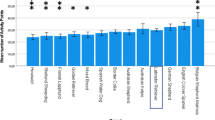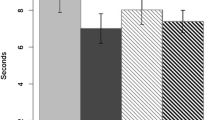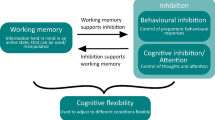Abstract
Several recent studies have shown that there is a general and marked canine cardiac response to humans and to petting from humans. Additional investigations have suggested that one of the major determinants of such responding is genetic. Some studies have indicated that such a response does not occur in nervous, short-haired pointer dogs. Evidence presented in this study indicates that a heart rate response to person and petting does occur in both the nervous as well as the normal pointer dog, but only when the animal is unrestrained. When placed in a restraining harness, only normal dogs showed a heart rate response to person and the characteristic bradycardia upon petting.
Moreover, in this and two other separate experiments in which tones (CS’s) were given, it was observed in both normal and nervous strains that mean baseline heart rates were as much as 40 beats per minute lower in the restrained situation than in the unrestrained situation. These experiments measured retention of cardiac response to aversive conditional signals, since most dogs (9 of 12) had received both tones and shock in a bar jumping-shock avoidance experiment one year previously. However, heart rates varied inconsistently in both magnitude and direction of change upon CS showing little or no retention.
These findings clarify ambiguity in previous reports and again show that the restraining conditions in an experiment can constitute a serious stress for the animal and be a major factor in the results.
Similar content being viewed by others
References
Dykman, R. A., Murphree, O. D., and Peters, J. E.: Like begets like: Behavioral tests, classical conditioning, and operant conditioning in two strains of pointer dogs.Ann. N. Y. Acad. Sci.,159: 976–1007, 1969.
Gantt, W. H.: Principles of nervous breakdown: schizokinesis and autokinesis.Ann. N. Y. Acad. Sci.,56: 143–163, 1953.
Gantt, W. H., Newton, J. E. O., and Royer, F. L.: Development of the experimental neurosis: Mechanism and factors.Proc. III World Congress Psychia., 991–995, 1962.
Gantt, W. H., Newton, J. E. O., Royer, F. L., and Stephens, J. H.: Effect of person.Cond. Reflex,1: 18–35, 1966.
Liddell, H. S.: Conditioning and emotions.Sci. Am.,190: 48–57, 1954.
Liddell, H. S.: A comprehensive approach to the dynamics of conditioning neurosis.Ann. N. Y. Acad. Sci.,56: 164–170, 1953.
Liddell, H. S.: Some specific factors that modify tolerance for environmental stress.Proc. Assoc. Res. Nerv. Ment. Dis.,29: 155–171, 1949.
Lorenz, K. Z.: The comparative method in studying innate behavior patterns.Sympos. Soc. Exp. Biol.,4: 221–268, 1950.
Lynch, J. J.: Psychophysiology and development of social attachment.J. Nerv. Ment. Dis.,151: 231–244, 1970.
Lynch, J. J., and McCarthy, J. F.: Social responding in dogs: Heart rale changes to a person.Psychophysiology,5: 389–393, 1969.
Lynch, J. J., and McCarthy, J. F.: The effect of petting on a classically condiditioned emotional response.Behav. Res. Ther.,5: 55–62, 1967.
Murphree, O. D., and Dykman, R. A.: Litter patterns in the offspring of nervous and stable dogs: I. Behavioral tests.J. Nerv. Ment. Dis.,141: 321–332, 1965.
Murphree, O. D., Dykman, R. A., and Peters, J. E.: Genetically-determined abnormal behavior in dogs.Cond. Reflex,2: 199–205, 1967.
Murphree, O. D., and Newton, J. E. O.: Schizokinesis: Fragmentation of performance in two strains of pointer dogs.Cond. Reflex,6: 91–100, 1971.
Murphree, O. D., Peters, J. E., and Dykman, R. A.: Behavioral comparisons of nervous, stable, and crossbred pointers at ages 2, 3, 6, 9, and 12 months.Cond. Reflex,4: 20–23, 1969.
Murphree, O. D., Peters, J. E., and Dykman, R. A.: Effect of Person on nervous, stable, and crossbred pointer dogs.Cond. Reflex,5: 273–276, 1967.
Newton, J. E. O., and Ehrlich, W.: Coronary blood flow in dogs: Effect of Person.Cond. Reflex,4: 81–88, 1969.
Newton, J. E. O., and Gantt, W. H.: The history of a catatonic dog.Cond. Reflex,3: 45–61, 1968.
Newton, J. E. O., and Gantt, W. H.: One-Trial cardiac conditioning in dogs.Cond. Reflex,4: 251–265, 1966.
Scott, J. P., and Fuller, J. L.:Genetics and the Social Behavior of the Dog. Chicago, The University of Chicago Press, 1965.
Author information
Authors and Affiliations
Rights and permissions
About this article
Cite this article
Thomas, K.J., Murphree, O.D. & Newton, J.E.O. Effect of person and environment on heart rates in two strains of pointer dogs. Conditional Reflex 7, 74–81 (1972). https://doi.org/10.1007/BF03000477
Issue Date:
DOI: https://doi.org/10.1007/BF03000477




